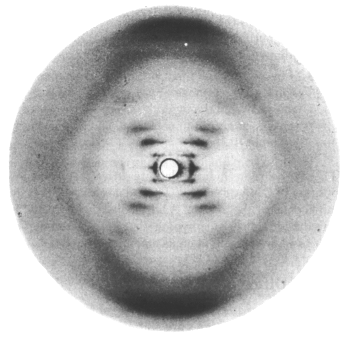
Gen Unit 1.1 Review
Quiz by Laikyn Skipper
Feel free to use or edit a copy
includes Teacher and Student dashboards
Measure skillsfrom any curriculum
Measure skills
from any curriculum
Tag the questions with any skills you have. Your dashboard will track each student's mastery of each skill.
With a free account, teachers can
- edit the questions
- save a copy for later
- start a class game
- automatically assign follow-up activities based on students’ scores
- assign as homework
- share a link with colleagues
- print as a bubble sheet
15 questions
Show answers
- Q1Which of the following scientist(s) is responsible for the discovery for the double helix structure of DNA?Erwin Chargaff (1950)Rosalind Franklin (1951)Watson and Crick (1952)Hershey and Chase (1952)30s
- Q2Which of the following scientist(s) is responsible for the base pairing rules?Watson and Crick (1953)Friedrich Miescher (1869)Rosalind Franklin (1951)Erwin Chargaff (1950)30s
- Q3Which of the following scientists used mice, rough and smooth strains of bacteria for their experiment(s)?Miescher (1869) and Gamow (1954)Griffth (1928) and Avery, McCarty and MacLeod (1944)Griffith (1928) and Hershey, Chase (1952)Franklin (1951) and Chargaff (1950)30s
- Q4Which of the following correctly labels the molecule above?A= covalent bonds, B= nitrogen bases, C= sugarA= nucleotide, B= sugar-phosphate backbone, C= hydrogen bondsA= sugar phosphate backbone, B= covalent bonds, C= nucleotide30s
- Q5What is the correct order of DNA extraction protocol?lysis, saline solution, soap, ethanollysis, ethanol, saline solution, soapethanol, saline solution, soap, lysis30s
- Q6What will have the most affect on the amount of DNA extracted from a plant, animal and fungus cell?the cell wall of fungus and plant cellsthe central vacuole of plant and animal cellsthe chloroplast of animal and fungus cellsthe cell membrane of fungus and plant cells30s
- Q7What is the purpose of the hydrogen bonds in DNA?it accounts for all of the genetic informationit allows more information to be stored in the moleculeit gives stability to the double helix shapeallows DNA to be easily unzipped when copying or reading information30s
- Q8What is the purpose of the sugar-phosphate backbone of DNA?it allows DNA to easily unzip when copying or reading informationit allows more information to be stored in the moleculeit gives stability to the double helix structureit accounts for all of the genetic information30s
- Q9What is the purpose of having two strands in DNA instead of one or three?if it had less, the molecule would be too hard to copy and if it had more, it would be unstableif it had less, it would be unstable and if it had more, it would be harder to copy and read information30s
- Q10What is the main purpose of adding saline to the cells?it helps dissolve the membranelysisit helps separate the DNA from the solutionit helps the DNA strands clump together30s
- Q11What step of DNA extraction protocol helps separate the DNA from the solution?lysisaddition of soapaddition of saltaddition of ethanol30s
- Q12What is the technical term for cell rupture?salineethanollysismashing30s
- Q13Which of the following scientist(s) conducted the experiment in the image?Franklin (1951)Hershey and Chase (1952)Watson and Crick (1953)Avery, McCarty and MacLeod (1944)30s
- Q14What were the major findings of Friedrich Griffith's experiment in 1928?he determined that DNA was the genetic material of the cell, not protein, by adding specific enzymes to virulent strains of DNAhe determined that the overall structure of DNA was a double helix with nitrogen bases in the middle and a sugar-phosphate backhe determined that bacteria could undergo "transformation" by incorporating the genetic material of other cellshe determined that bacteriophages injected DNA into host cells in order to replicate, confirming DNA was genetic material30s
- Q15Which of the following best explains the similarities between Avery, McCarty, MacLeod (1944) and Hershey, Chase (1952) experiments?both confirmed that DNA was the genetic material of the cellboth used mice and two strains of bacteriaboth focused on the structure of DNAboth focused on how DNA was used and replicated30s
